COSMOCORE 2.6PBr
Features
- Separate hydrophilic compounds in reversed-phase conditions
- Retain hydrophilic compounds longer than C18
- Greater sample loading capacity than HILIC
- High performance similar to sub-2 µm particles with lower back pressure
Suitable Samples
- Hydrophilic compounds
- Nucleic acids and derivatives
- Surfactants
- Glycosides
- Peptides
>> Information on COSMOCORE 2.6C18
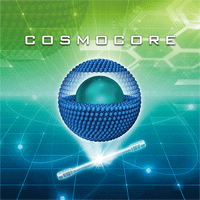
Product Information
About Core-Shell Particles
Column Specifications
Separation of Hydrophilic Compounds (low retention on C18)
COSMOSIL PBr retains hydrophilic compounds stronger than C18 columns under the same reversed-phase conditions.
Nucleic Acid Metabolites
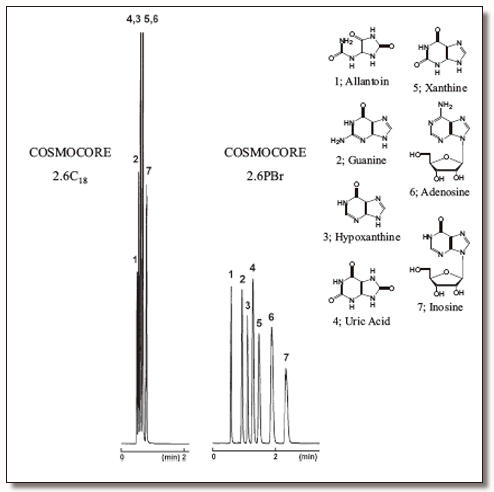
| Conditions | ||||
|---|---|---|---|---|
| Column size | 2.1mmI.D.-100mm | Sample |
|
|
| Mobile phase | Methanol/ 100mmol/l Phosphate buffer(pH2.5) = 10/90 | |||
| Flow rate | 0.4 ml/min | |||
| Temperature | 40°C | |||
| Detection | UV 240 nm | Inj. Vol | 1.0 µl | |
Malonyl CoA, CoA, Acetyl CoA
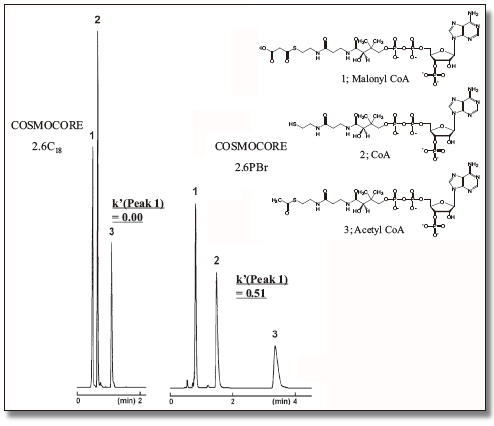
| Conditions | ||||
|---|---|---|---|---|
| Column size | 2.1 mm I.D. - 100 mm | Sample |
|
|
| Mobile phase | Acetonitrile/ 20mmol/l Phosphate buffer(pH7.0) = 5/95 | |||
| Flow rate | 0.4 ml/min | |||
| Temperature | 40°C | |||
| Detection | UV 260 nm | Inj. Vol | 1.0 µl | |
Separation of Hydrophilic Compounds (compounds with similar hydrophobicity)
COSMOCORE 2.6PBr can separate compounds with similar hydrophobicity, utilizing several kinds of molecular interactions, including dispersion force generated by the bromine atoms.
ATP,ADP,AMP
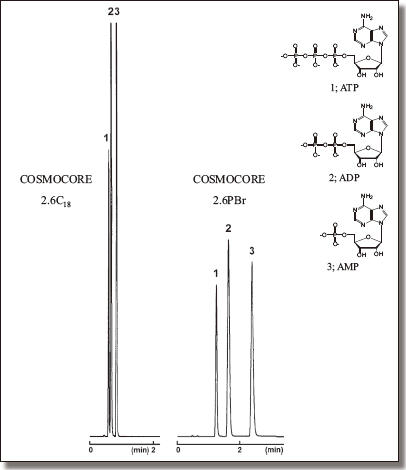
| Conditions | ||||
|---|---|---|---|---|
| Column size | 2.1 mm I.D. - 100 mm | Sample |
|
|
| Mobile phase | 20mmol/l Phosphate buffer(pH7.0) | |||
| Flow rate | 0.4 ml/min | |||
| Temperature | 40°C | |||
| Detection | UV 260 nm | Inj. Vol | 0.5 µl | |
Vitamin B3 (Nicotinic Acid, Nicotinamide)
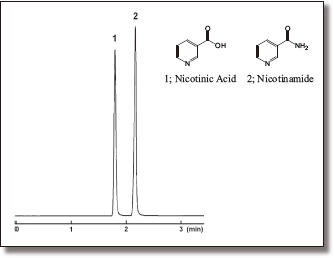
| Conditions | ||||
|---|---|---|---|---|
| Column size | 2.1 mm I.D. - 150 mm | Sample |
|
|
| Mobile phase | 10mmol/l Phosphate buffer(pH7.0) | |||
| Flow rate | 0.4 ml/min | |||
| Temperature | 40°C | |||
| Detection | UV 260 nm | Inj. Vol | 0.5 µl | |
Thiamine Pyrophosphate, Thiamine
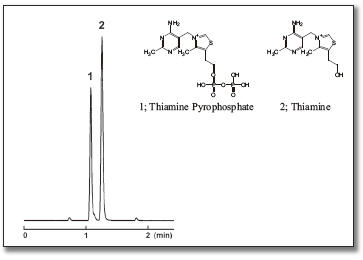
| Conditions | ||||
|---|---|---|---|---|
| Column size | 2.1 mm I.D. - 150 mm | Sample |
|
|
| Mobile phase | 100mmol/l Phosphate buffer(pH2.5) | |||
| Flow rate | 0.4 ml/min | |||
| Temperature | 40°C | |||
| Detection | UV 245 nm | Inj. Vol | 0. 5 µl | |
Separation Mechanism
Dispersion force (instantaneous dipole-induced dipole force)
London dispersion force is a weak intermolecular force that results from dipoles temporarily induced by random unsymmetrical electron positions in two adjacent atoms, also known as instantaneous dipole?induced dipole force. It is present in all molecules regardless of polarity. Compounds with high polarizability have stronger dispersion force.
Compounds with stronger dispersion force
- Larger and heavier molecules
- Molecules with larger and heavier atoms (e.g. from weakest to strongest in halogens, F2, Cl2, Br2, and I2)
- Molecules with delocalized electrons and resonance (e.g. aromatic compounds)
⇓
COSMOSIL PBr column is packed with pentabromobenzyl-bonded silica that enables separation by dispersion force interaction.
Difference between Methanol and Acetonitrile Mobile Phases
Comparison of Separation Ability
Acetonitrile is frequently used in HPLC to reduce backpressure. However, the π electrons in acetonitrile interfere with the dispersion force interaction between the sample and the stationary phase. Therefore, we recommend using methanol as the organic solvent.
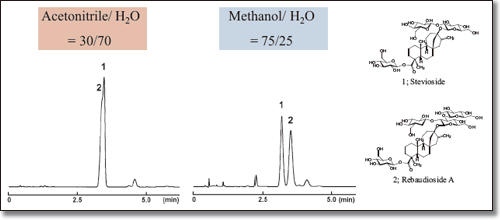
| Conditions | ||||
|---|---|---|---|---|
| Column size | 2.1 mm I.D. - 100 mm | Sample |
|
|
| Flow rate | 0.4 ml/min | |||
| Temperature | 40°C | |||
| Detection | UV 210 nm | Inj. Vol | 1.0 µl | |
Comparison to HILIC
Both columns are suitable for analysis of hydrophilic compounds, but they have different properties.
| PBr | HILIC | ||||
|---|---|---|---|---|---|
| Separation Mode |
Reversed Phase | Hydrophilic Interaction (HILIC) | |||
| Features |
|
|
|||
Applications
Separation of Hydrophilic Compounds (low retention on C18)
Water-Soluble Vitamins
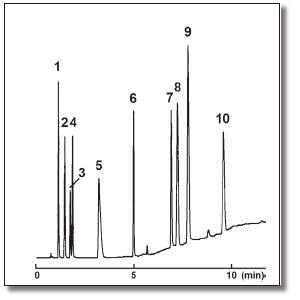
| Conditions | |
|---|---|
| Column size | 2.1 mm I.D.-150 mm |
| Mobile phase | A; 20mmol/l Phosphate buffer(pH2.5) B; Methanol/ 20mmol/l P hosphate buffer(pH2.5) = 60/40 B conc. 0% (0-1min), 0→80% (1→5min), 80→100% (5→9min) |
| Flow rate | 0.4 ml/min |
| Temperature | 40°C |
| Detection | UV 220 nm |
| Sample |
|
| Inj. Vol | 1.25 µl |
Separation of Hydrophilic Compounds (Glycosides)
Glycosides with identical aglycones but different glycosyl groups can also be separated.
UDP Glycosides
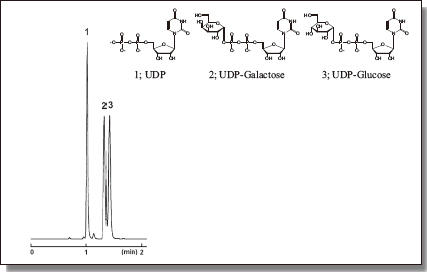
| Conditions | |||
|---|---|---|---|
| Column Size | 2.1 mm I.D.-150 mm | Sample |
|
| Mobile Phase | 100 mmol/l Phosphate buffer(pH7.0) | ||
| Flow Rate | 0.4 ml/min | ||
| Temperature | 40°C | ||
| Detection | UV 260 nm | Inj. Vol: | 0.5 µl |
Arbutin and Hydroquinone
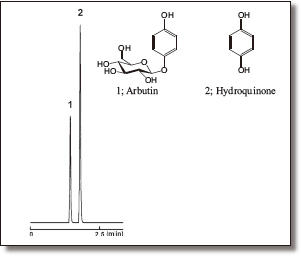
| Conditions | ||||
|---|---|---|---|---|
| Column size | 2.1 mm I.D. - 100 mm | Sample |
|
|
| Mobile phase | Acetonitrile/ 20mmol/l Phosphate buffer(pH2.5) | |||
| Flow rate | 0.4 ml/min | |||
| Temperature | 40°C | |||
| Detection | UV 290 nm | Inj. Vol | 0.75 µl | |
Usage information
| Column | 2.6 COSMOCORE PBr | ||
|---|---|---|---|
| I.D. (mm) | 2.1 | 3 | 4.6 |
| Washing method | 1. Remove buffer, salts and/or acid from column: wash for 10-15 min. using the mobile phase last used, without buffer, salts or acid. For example, if your mobile phase was 50:50 methanol/20 mmol/l phosphate buffer, wash with 50:50 methanol/water. 2. (If you used a buffer, always do step 1 first!) Remove adsorbed compounds and fix unstable baselines by washing with methanol and/or THF. |
||
| Storage conditions | Short-term (up to a week): Remove buffer, salts and/or acid from column: wash for 10-15 min. using the mobile phase last used, without buffer, salts or acid. For example, if your mobile phase was 50:50 methanol/20 mmol/l phosphate buffer, wash with 50:50 methanol/water. Long-term: Remove buffer, salts and/or acid from column: wash for 10-15 min. using the mobile phase last used, without buffer, salts or acid. Then, replace the solvent with 70% methanol or acetonitrile : 30% water. In either case, tightly plug the column, and store in a cool and dry place. |
||
| Usable pH range | pH 2-7.5 | ||
| Max. pressure | 60MPa | ||
| Temperature range | The maximum usable temperature is 60°C. However. for regular use, please use at a constant temperature between 20°C and 50°C. | ||
| Usable solvents | Any solvent that will not dissolve the silica gel (such as alkaline solutions) or cleave the stationary phase (such as very acidic solutions) is usable. Note: For solvents with high viscosity, please watch the system pressure and keep it below 60 MPa. Also, please wash the column after using acidic mobile phases or solvents with high freezing points. |
||
| Other instructions | - Buffer concentration is usually sufficient at 0.005 - 0.02 mol/L. - Always filter mobile phases using a 0.45 µm or finer filter before use. - Acetonitrile is not recommended as a mobile phase. |
||
Downloads
Ordering Information
Analytical Column (Particle size : 2.6 µm)
COSMOCORE 2.6PBr Column
| Product Name | Size | Product No. | Price |
|---|---|---|---|
| COSMOCORE 2.6PBr | |||
| 2.1 mm I.D. x 30 mm | 13692-21 | Inquire Now |
|
| 2.1 mm I.D. x 50 mm | 13693-11 | ||
| 2.1 mm I.D. x 75 mm | 13694-01 | ||
| 2.1 mm I.D. x 100 mm | 13695-91 | ||
| 2.1 mm I.D. x 150 mm | 13697-71 | ||
| 3.0 mm I.D. x 30 mm | 13698-61 | ||
| 3.0 mm I.D. x 50 mm | 13699-51 | ||
| 3.0 mm I.D. x 75 mm | 13700-01 | ||
| 3.0 mm I.D. x 100 mm | 13701-91 | ||
| 3.0 mm I.D. x 150 mm | 13703-71 | ||
| 4.6 mm I.D. x 30 mm | 13705-51 | ||
| 4.6 mm I.D. x 50 mm | 13712-51 | ||
| 4.6 mm I.D. x 75 mm | 13714-31 | ||
| 4.6 mm I.D. x 100 mm | 13715-21 | ||
| 4.6 mm I.D. x 150 mm | 13719-81 | ||
| 4.6 mm I.D. x 250 mm | 13734-71 |
Other sizes may be available.
>> For UHPLC (COSMOCORE) fittings and adapters, please see this page.









